Introduction: Understanding the Durag Phenomenon
The durag, a head covering made of silky or stretchy fabric, has become an iconic accessory in contemporary fashion and cultural expression. Originating from African American communities, the durag has evolved from a practical hair care tool to a symbol of style, confidence, and self-expression.
Origins and Cultural Significance
To truly understand the durag phenomenon, it’s important to delve into its rich history and cultural significance. The durag has roots in the early 19th century when it was used by African American women to protect their hair while they slept. Over time, it became popular among African American men as well, serving as a means of preserving hairstyles and promoting hair health.
Evolution into a Fashion Statement
In recent decades, the durag has transcended its functional purpose and has become a fashion statement in its own right. Artists, musicians, athletes, and influencers have embraced the durag as a symbol of identity and personal style. It has found its way into mainstream fashion, gracing runways and red carpets, and has even been worn by celebrities as a deliberate fashion choice.
Cultural Impact and Controversies
Despite its widespread popularity, the durag has not been without controversies. In the past, durags were often associated with negative stereotypes and misconceptions, perpetuating racial bias and reinforcing harmful stereotypes. However, the perception of the durag has evolved, and it is now recognized as an empowering symbol of cultural pride and self-affirmation.
Purpose of the Article
The purpose of this article is to demystify the “durag pronunciation” and explore the art of styling it with confidence. By providing a comprehensive guide, we aim to educate readers about the cultural significance, history, and proper usage of durags. We will delve into the materials, colors, and styles available, as well as provide step-by-step instructions on how to wear a durag correctly.

1. The Origins of the Term “Durag”
The term “durag” has become synonymous with the head covering we know today, but its origins and etymology are not widely known. To understand the term’s roots, we need to explore its history and connections to African American culture.
Historical Context
The term “durag” is believed to have originated in the 1970s within African American communities, particularly in urban areas. It emerged as a colloquial term used to describe the head covering made from materials like silk or stretchy fabric. The exact origin of the term is uncertain, but it is thought to have emerged as a linguistic evolution of the words “do-rag” or “doo-rag,” which were commonly used to describe hair wraps or headscarves.
Cultural Significance
The durag holds deep cultural significance within African American communities. It has been embraced as a symbol of identity, style, and self-expression. The term “durag” has become an integral part of the lexicon, representing not only the head covering itself but also the confidence, resilience, and cultural heritage associated with it.
Evolution of the Term
Over time, the pronunciation of “durag” has evolved, influenced by regional dialects, accents, and linguistic variations. This has led to different pronunciations and spellings, such as “do-rag,” “doo-rag,” or even “du-rag.” While these variations exist, it’s important to note that they all refer to the same head covering.
Cultural Appropriation and Pronunciation
Due to the popularity of durags in recent years, there has been a rise in their appropriation by individuals outside of African American communities. This has sometimes led to mispronunciations or a lack of understanding regarding the cultural significance of the term. It is crucial to approach the pronunciation of “durag” with respect and appreciation for its origins.
Promoting Correct Pronunciation
To honor the cultural heritage and significance of the durag, it is essential to promote the correct pronunciation. The most widely accepted pronunciation is “duh-rag,” with a short ‘u’ sound. However, it is worth acknowledging that variations may exist based on regional accents and dialects.
Embracing Cultural Diversity
In discussing the pronunciation of “durag,” it is essential to recognize and celebrate the diversity within language and cultural expression. Different communities may have their own unique pronunciations, and these variations should be embraced and respected.
By understanding the origins and cultural significance of the term “durag,” we can appreciate its deeper meaning and promote respectful pronunciation. Recognizing the history and significance behind the term allows us to engage in meaningful conversations about the durag’s impact on fashion, identity, and self-expression.
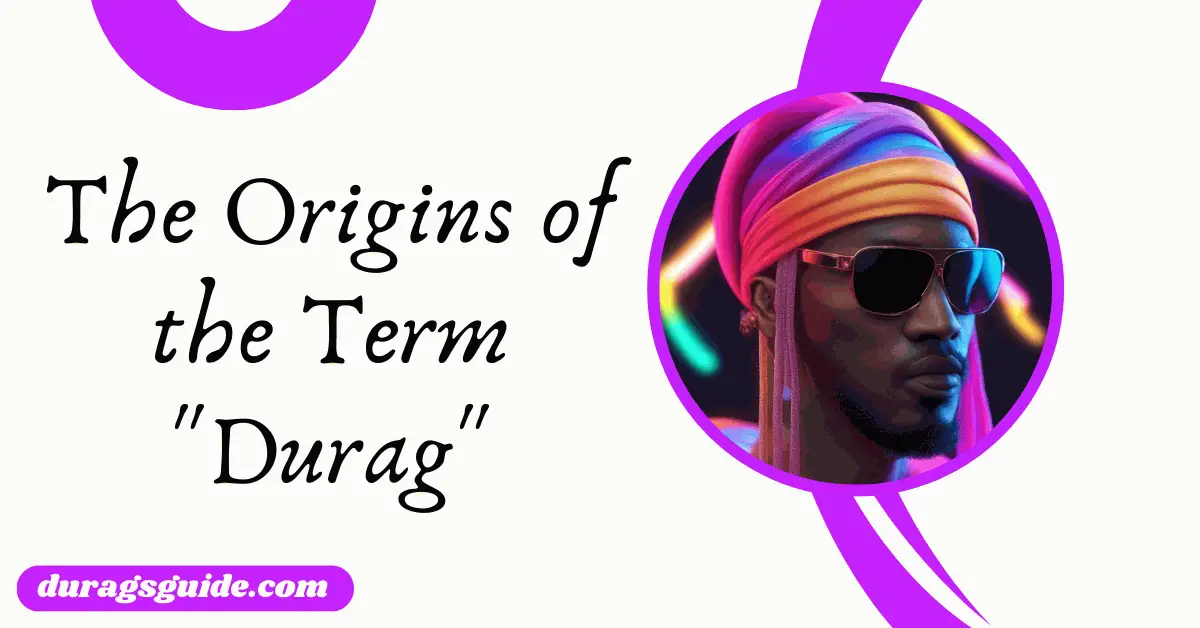
2. Common Mispronunciations: Breaking Down the Variations
When it comes to the pronunciation of “durag,” there are several common variations that have emerged over time. It’s important to acknowledge these variations and understand their origins to gain a comprehensive understanding of the term. Let’s explore some of the common mispronunciations and break down the variations.
“Do-rag”
One of the most prevalent mispronunciations is “do-rag.” This variation likely stems from the term’s earlier usage as “do-rag” or “doo-rag.” The pronunciation “do-rag” with a long ‘o’ sound is often associated with regions where regional dialects or accents influence speech patterns. It is important to note that while “do-rag” is a common mispronunciation, it does not accurately reflect the original pronunciation of “durag.”
“Doo-rag”
Similar to “do-rag,” the variation “doo-rag” also features a long ‘o’ sound. This pronunciation likely emerged due to linguistic shifts and regional accents. The pronunciation “doo-rag” is another example of a common mispronunciation that has become widely used, even though it deviates from the original pronunciation.
“Du-rag”
Another variation that has gained some traction is “du-rag.” This pronunciation places emphasis on the ‘u’ sound, resulting in a short ‘u’ sound rather than a long ‘u’ sound. It is worth noting that while “du-rag” may be used by some individuals, it is not the most widely recognized or accepted pronunciation.
Regional and Cultural Influences
The variations in pronunciation of “durag” can be influenced by regional accents, cultural backgrounds, and individual speech patterns. Different communities may have their own unique ways of pronouncing the term, adding to the linguistic diversity surrounding the word.
Embracing Linguistic Variation
Language is a dynamic and ever-evolving system, influenced by various factors. It is important to recognize that language variations and mispronunciations can occur naturally over time. While it is valuable to understand the correct pronunciation of “durag,” it is also important to acknowledge and respect the linguistic diversity that exists within language and cultural expression.
Promoting Awareness and Education
By discussing the common mispronunciations and variations of “durag,” we can promote awareness and understanding. This helps to foster respectful conversations and encourages individuals to approach the term with cultural sensitivity. It is through education and open dialogue that we can dispel misconceptions and promote a deeper appreciation for the term’s origins and cultural significance.
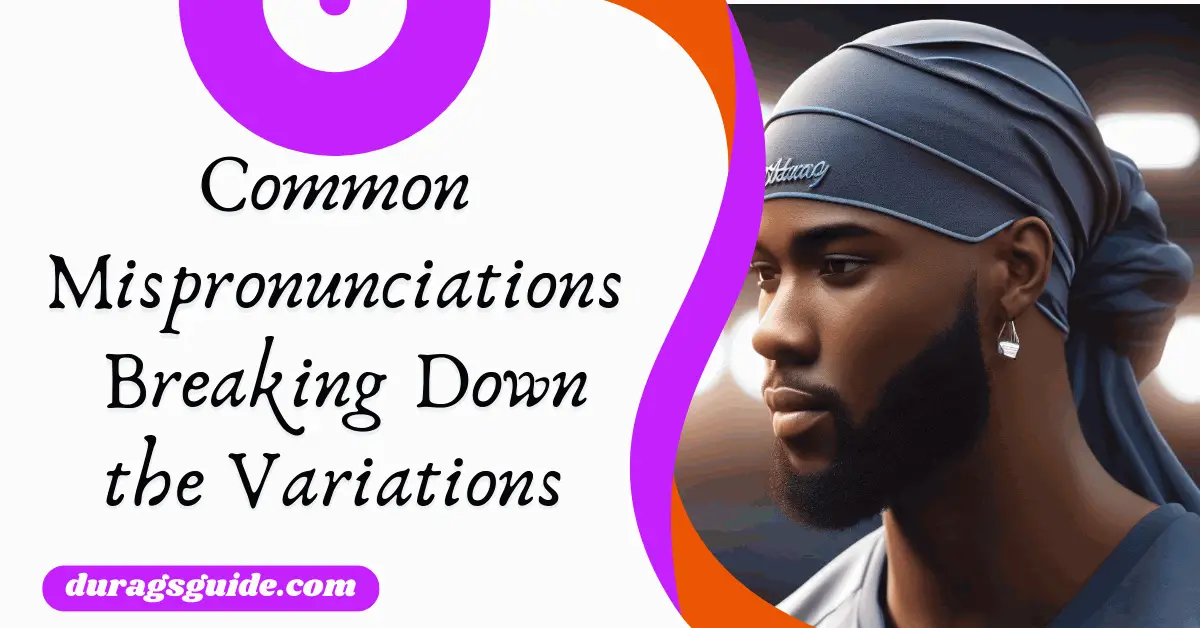
3. The Correct Pronunciation: Unveiling the Truth
To demystify the correct pronunciation of “durag,” it is important to delve into the phonetics of the term and understand its true pronunciation. Let’s unravel the truth and explore the correct way to pronounce “durag.”
Phonetic Breakdown
The correct pronunciation of “durag” is “duh-rag.” It consists of two syllables: “duh” and “rag.” The first syllable, “duh,” is pronounced with a short ‘u’ sound, similar to the word “duh” or “dull.” The second syllable, “rag,” is pronounced as it appears, rhyming with the word “rag” or “bag.” When combined, the two syllables create the correct pronunciation of “durag.”
Emphasizing the ‘U’ Sound
One key aspect of the correct pronunciation is the short ‘u’ sound in the first syllable. It is important to pronounce the ‘u’ as a short vowel sound, similar to the ‘u’ in words like “cup” or “hut.” This helps distinguish the correct pronunciation from common mispronunciations like “do-rag” or “doo-rag,” where the ‘o’ sound is elongated.
Cultural Sensitivity and Respect
Understanding and using the correct pronunciation of “durag” is essential for showing cultural sensitivity and respect. By pronouncing the term correctly, we acknowledge and honor the cultural heritage associated with durags and the communities that have embraced them as a form of self-expression and identity.
Promoting Correct Pronunciation
To promote the correct pronunciation of “durag,” it is helpful to raise awareness and educate others about the correct phonetics. By sharing this knowledge, we can dispel misconceptions and encourage a more accurate representation of the term.
Language Evolution and Regional Differences
Language is dynamic, and pronunciation can vary based on regional differences and accents. It is important to recognize that there may be slight variations in pronunciation based on individual speech patterns or regional dialects. However, the core pronunciation of “duh-rag” remains consistent and widely accepted.
Appreciating Cultural Significance
By pronouncing “durag” correctly, we demonstrate our appreciation for the cultural significance of the term and the communities that have embraced it. It allows us to engage in meaningful conversations about the durag’s history, evolution, and impact on fashion and self-expression.
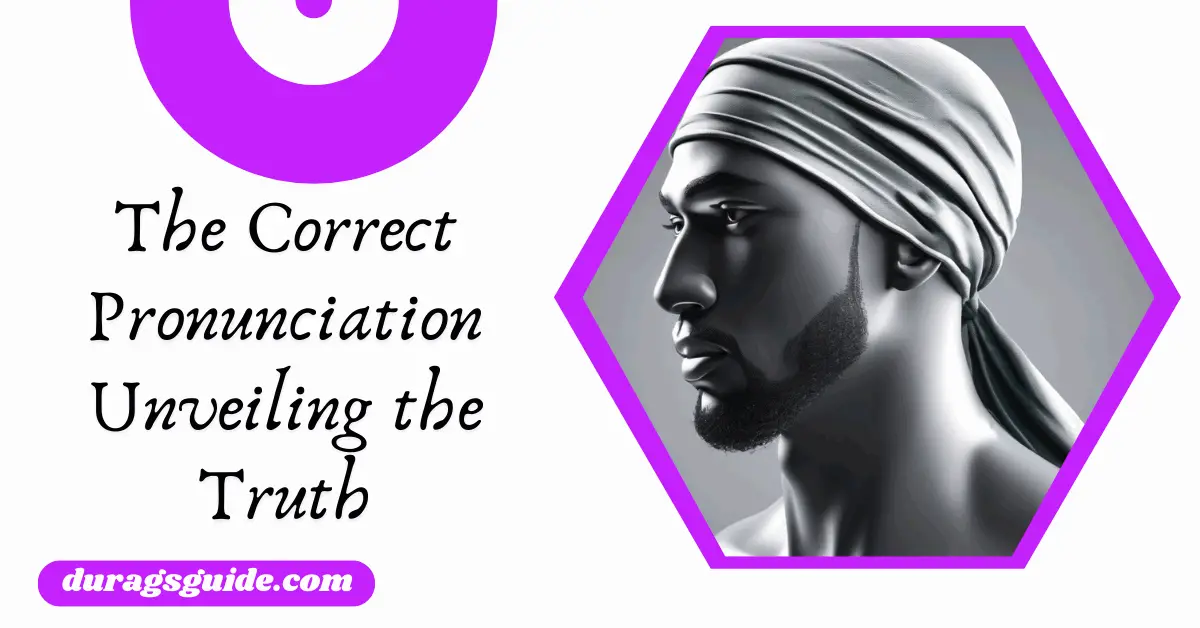
4. Linguistic Analysis: Understanding the Phonetics of “Durag”
To gain a deeper understanding of the correct pronunciation of “durag,” it is helpful to analyze its phonetics. By breaking down the word into its individual sounds and examining its phonetic components, we can unravel the linguistic aspects of “durag.”
Breaking Down the Syllables
The word “durag” consists of two syllables: “duh” and “rag.” Each syllable contributes to the overall pronunciation of the word.
- The first syllable, “duh,” begins with a voiced consonant sound “d” followed by a short vowel sound “uh.” The ‘u’ sound in “duh” is pronounced like the short ‘u’ in words like “cup” or “hut.”
- The second syllable, “rag,” begins with the consonant sound “r” and ends with the vowel sound “ag,” which rhymes with words like “rag” or “bag.”
Stress and Emphasis
In terms of stress and emphasis, the primary stress falls on the first syllable, “duh.” This means that when pronouncing “durag,” the first syllable should be given more emphasis and be slightly longer in duration compared to the second syllable, “rag.”
Phonetic Representation
Using the International Phonetic Alphabet (IPA), the correct pronunciation of “durag” can be represented as /dəˈræɡ/. The symbols in the IPA provide a standardized way to represent the sounds of different languages.
- The symbol /d/ represents the voiced ‘d’ sound at the beginning of “duh.”
- The symbol /ə/ represents the short ‘uh’ sound in “duh.”
- The symbol /ˈr/ represents the ‘r’ sound in “rag.”
- The symbol /æ/ represents the vowel sound in “rag,” similar to the ‘a’ sound in words like “bag” or “cat.”
- The symbol /ɡ/ represents the ‘g’ sound at the end of “rag.”
Regional and Individual Variations
It is worth noting that regional accents and individual speech patterns can influence the pronunciation of “durag.” Different English-speaking regions may have slight variations in the way certain sounds are pronounced. These variations can lead to subtle differences in the pronunciation of “durag” while still maintaining the core elements of the word.
Language and Linguistic Shifts
Languages evolve over time, and pronunciations can change as a result of linguistic shifts and influences. The pronunciation of “durag” may have undergone slight changes or variations since its introduction, reflecting the dynamic nature of language.
Understanding the phonetic breakdown of “durag” provides insight into the individual sounds that make up the word. By appreciating the linguistic aspects of “durag,” we can better grasp its pronunciation and engage in meaningful discussions about its cultural significance and impact.
Now write detailed content for section 5 of the outline.
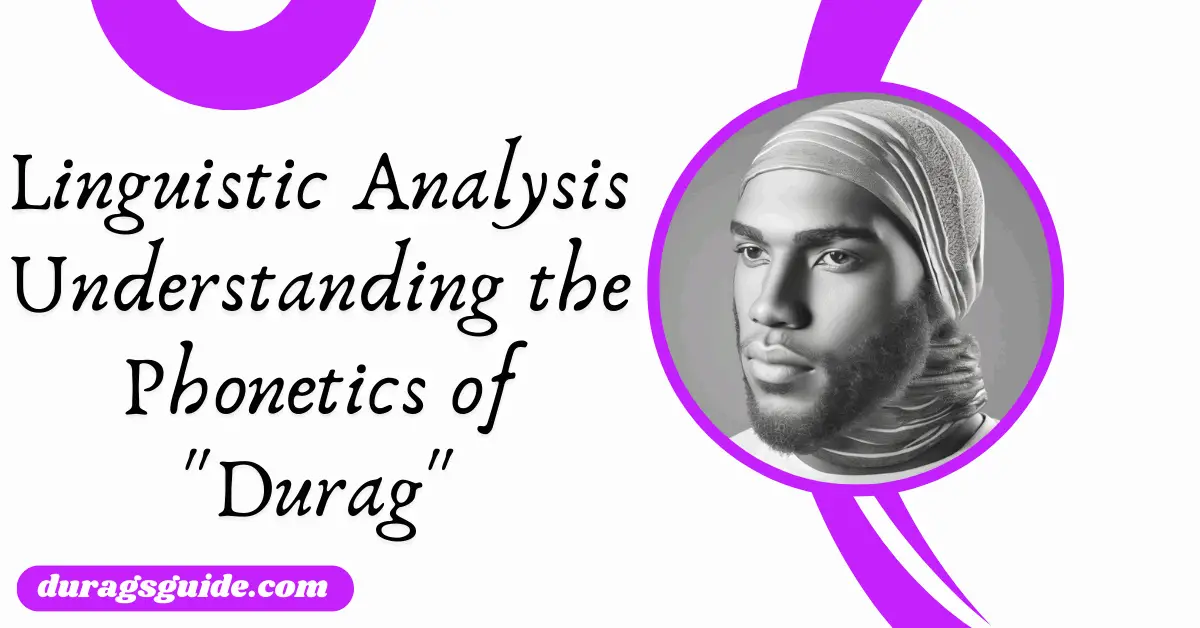
5. Regional and Cultural Influences on Durag Pronunciation
The pronunciation of “durag” can be influenced by regional dialects, accents, and cultural backgrounds. Different communities may have their own unique ways of pronouncing the term, adding to the linguistic diversity surrounding the word. Let’s explore the regional and cultural influences on durag pronunciation.
Regional Dialects and Accents
English is a language with rich regional variations and accents. Pronunciations can differ based on geographical locations, such as North America, the United Kingdom, or the Caribbean. Within these regions, specific dialects and accents can further influence the way “durag” is pronounced.
For example, in certain regions of the United States, such as the Southern states, a regional accent might lead to a pronunciation closer to “do-rag” with a long ‘o’ sound. Similarly, in some Caribbean dialects, the pronunciation might lean towards “doo-rag” with a long ‘o’ sound. These variations reflect the linguistic diversity shaped by specific regional influences.
Cultural Backgrounds and Heritage
Cultural backgrounds and heritage also play a significant role in the pronunciation of “durag.” The term has strong associations with African American culture and has been embraced as a symbol of identity and style within that community. Therefore, the pronunciation of “durag” can be influenced by the speech patterns and accents commonly found within African American communities.
Members of the African diaspora or individuals with a connection to African American culture may pronounce “durag” in a way that reflects their cultural background. This can result in variations such as “duh-rag” or even “doo-rag” with a long ‘u’ sound. These pronunciations are rooted in cultural traditions and should be respected and understood in their context.
Individual Speech Patterns
Beyond regional and cultural influences, individual speech patterns can also affect the pronunciation of “durag.” Each person has their own unique way of speaking, influenced by factors such as upbringing, education, and personal experiences. These individual speech patterns can result in slight variations in the pronunciation of “durag” while still retaining the core elements of the term.
It is important to acknowledge and appreciate the individuality of speech patterns and understand that slight variations in pronunciation do not diminish the cultural significance of “durag.”
Embracing Linguistic Diversity
The regional and cultural influences on durag pronunciation should be seen as a celebration of linguistic diversity. Language is a dynamic and ever-evolving system, shaped by various factors. Embracing the different ways “durag” is pronounced allows us to appreciate the rich tapestry of human expression and cultural heritage.
While recognizing the correct pronunciation of “durag” is important, it is equally vital to respect and appreciate the variations that arise from regional dialects, accents, and cultural backgrounds. By engaging in open and respectful conversations, we can deepen our understanding of the cultural significance of “durag” and foster inclusivity and appreciation for linguistic diversity.
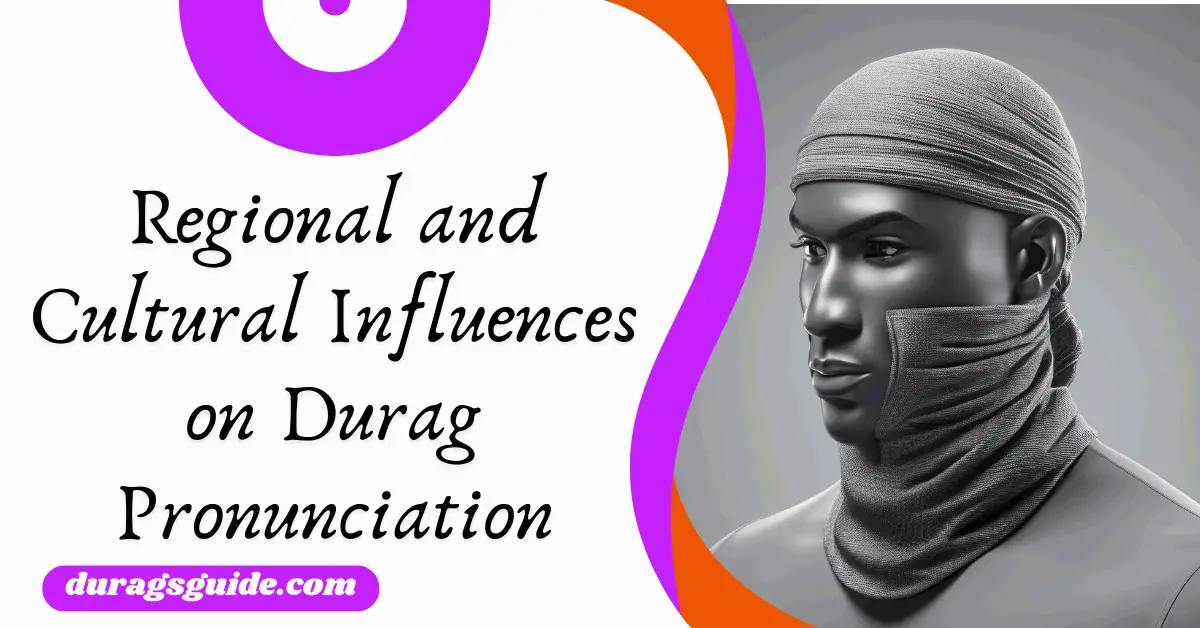
6. Promoting Respectful Pronunciation of “Durag”
Promoting respectful pronunciation of “durag” is essential to honor the cultural heritage and significance of the term. By using the correct pronunciation and encouraging others to do the same, we demonstrate cultural sensitivity and respect. Here are some ways to promote respectful pronunciation:
Education and Awareness
Raising awareness about the correct pronunciation of “durag” is an important first step. Educate others about the phonetic breakdown and the cultural significance of the term. By sharing this knowledge, we can dispel misconceptions and foster a greater understanding of the term’s origins and importance.
Leading by Example
Lead by example and pronounce “durag” correctly in your conversations. By consistently using the correct pronunciation, you can encourage others to do the same. This small but impactful act helps to promote respectful language usage and cultural sensitivity.
Correcting Mispronunciations
When you hear someone mispronouncing “durag,” kindly and respectfully correct them. Share the correct pronunciation and explain its significance. This correction can be done in a non-judgmental manner to promote understanding rather than criticism.
Encouraging Cultural Appreciation
Encourage others to appreciate and respect the cultural significance of “durag.” Discuss its history, associations with identity and self-expression, and its impact on fashion and popular culture. By fostering appreciation, we create an environment where the correct pronunciation is valued and understood.
Embracing Linguistic Diversity
While promoting the correct pronunciation, it is also important to recognize and embrace the linguistic diversity surrounding “durag.” Acknowledge that variations in pronunciation may exist due to regional accents, dialects, and cultural backgrounds. Engage in respectful conversations about these variations, appreciating the richness they bring to language and cultural expression.
Sensitivity to Appropriation
Be mindful of the appropriation of “durag” by individuals outside of African American communities. When discussing or using the term, emphasize its cultural significance and discourage superficial or disrespectful usage. By promoting respectful and informed conversations, we can help prevent the dilution or misrepresentation of the term.
Continuous Learning and Growth
Language and cultural understanding are ever-evolving. Stay open to learning and growing in your knowledge of “durag” and its pronunciation. Engage in ongoing conversations, listen to diverse perspectives, and adapt your understanding accordingly. This commitment to continuous learning helps foster a more inclusive and respectful environment.

Final Thoughts
In conclusion, the pronunciation of “durag” can vary due to regional dialects, accents, and cultural backgrounds. While the correct pronunciation is “duh-rag,” it is important to recognize and respect the linguistic diversity surrounding the term. By promoting understanding, appreciation, and cultural sensitivity, we can create an inclusive environment that honors the significance of “durag” and fosters a deeper appreciation for the diverse linguistic expressions within our communities.
FAQS
How do you pronounce “durag”?
The correct pronunciation of "durag" is "duh-rag," with a short 'u' sound in the first syllable.
Are there different ways to pronounce “durag”?
Yes, variations in pronunciation can exist due to regional dialects, accents, and cultural backgrounds. However, "duh-rag" is the widely accepted and commonly used pronunciation.
Why is it important to pronounce “durag” correctly?
Pronouncing "durag" correctly is important to honor the cultural heritage and significance of the term. It shows respect for the communities that embrace it and promotes cultural sensitivity.
What if I mispronounce “durag” unintentionally?
If you unintentionally mispronounce "durag," it is perfectly fine. Simply correct yourself when you realize it and try to use the correct pronunciation going forward. It's all about learning and growing in our understanding of language and cultural expressions.
What if I still struggle with pronouncing “durag” correctly?
Practice saying the word aloud and listen to native speakers or audio recordings to help improve your pronunciation.
